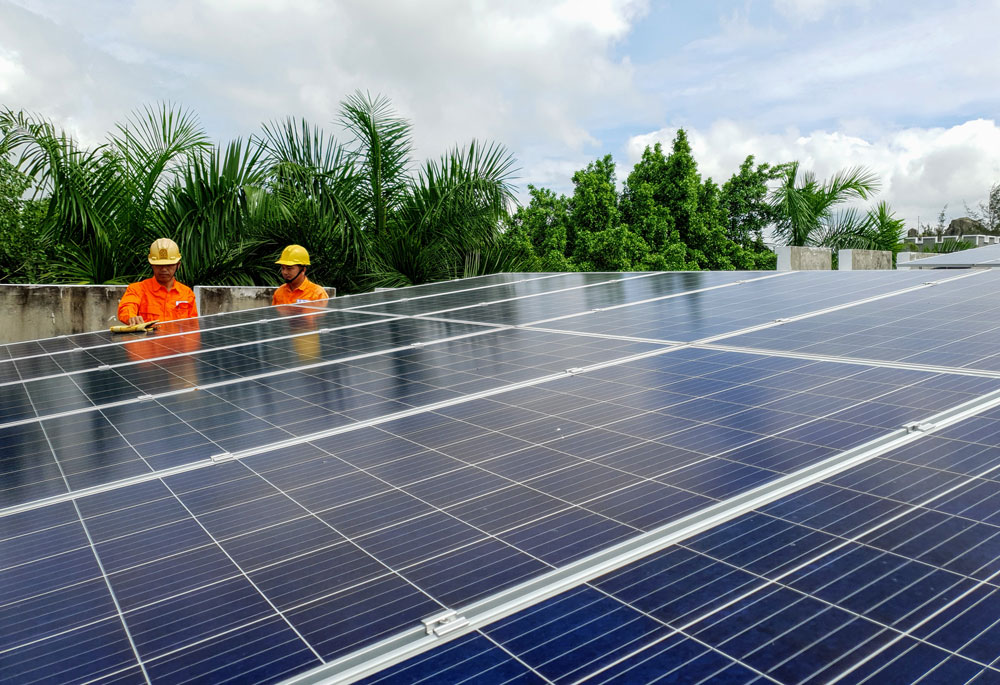A policy boost is expected for renewable power
The positive forecast for renewable energy was confirmed by the most recent Power Development Plan 8 draft (PDP8 draft).

The new PDP8 draft encourages rooftop solar for self-use purposes with an additional 3,000 MW in 2022–30F.
>> Vietnam needs laws for sustainable energy development
The Ministry of Industry and Trade (MOIT) has continued to finish, carry out appraisal procedures, and submit to the Prime Minister the most recent iteration—the Power Development Plan 8 draft (PDP8 draft)—in November 2022. These discussions have been based on the spirit of Report No. 2279/TTrBCT dated April 29, 2022. In light of this, the most recent draft essentially gave a number of useful details, always favoring renewable energy (RE). while the RE is regarded as the long-term leader in the growth of Vietnam's strength.
With a greater capacity component in 2022–2045F, the November 2022 PDP8 draft continued to improve wind power. Wind energy has grown quickly since the FIT policy's expiration in 2021. As a result, the capacity of wind energy will increase at a rate of 16% CAGR between 2022 and 2045 degrees Fahrenheit, with onshore wind energy growing by 4.6 times to 21,480 MW in 2030 after reaching 66,050 MW in 2050.
On the other hand, Mr. Nguyen Duc Tung, analyst at VNDirect, anticipates the development of an initial 7,000 MW of offshore wind power in 2022–30F, followed by a startling acceleration to 87,500 MW in 2050F. In all, wind power will consume 18% of the total capacity in 2030F, 5% points more than in the Mar-21 version, before using the majority of the 30% total capacity in 2045F. Additionally, the levelized cost of electricity (LCOE) of wind power is on the decline, which will contribute to the rapid growth of this energy source.
Even if the initial cost of renewable energy sources is higher than that of conventional thermal sources, MOIT claims that it is gradually decreasing due to increased capacity factors and economies of scale. On the other hand, rising input costs and technological developments to reduce emissions are predicted to cause the LCOE of thermal power to increase.
Solar power will be delayed until 2030F for solar farms after an excessive increase in the 2019–21 period saw them reach 21% of their overall capacity. In particular, the 2,360 MW delayed solar project that was planned to proceed with development in the Oct. 22 iteration has been scaled back in the Nov. 22 edition.
>> Unlocking the international financing for renewable energy
Under the firm view of limit ed solar growth in 2022–30F from the government, MOIT has reviewed and suggested continuing to deploy 11 projects totaling 726.02MW that have either finished the construction phase or fulfilled legal procedures. The remaining 12 projects, totaling 1,634.4 MW, that are in the process of preparing procedures and FS will be delayed until after 2030F to ensure system safety.

Although these projects are currently not included in the power plan, Mr. Nguyen Duc Tung said the continuation of these projects would be reasonable to avoid legal risk as well as future lawsuits and investor compensation. Besides, the new PDP8 draft encourages rooftop solar for self-use purposes with an additional 3,000 MW in 2022–30F. Under the direction of the Prime Minister, the MOIT is developing a mechanism to support the development of such projects.
Overall, Mr. Nguyen Duc Tung said the solar power outlook would improve from 2030F onward, after being slowed down in 2022–30F. Its capacity will reach around 45,400 MW in 2030–35F, then accelerate to 168,000 MW in 2045–45F, accounting for 24% of total power capacity.








